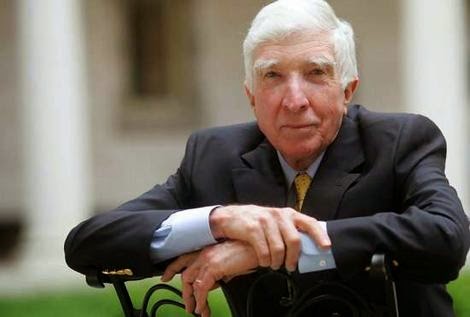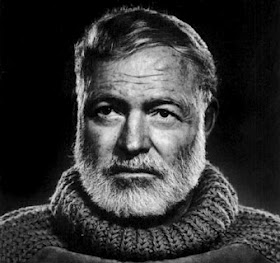James Joyce "Araby"
James Joyce (1882-1941)
(BORN FEB. 2, 1882, DUBLIN, IRE.DIED JAN. 13, 1941, ZRICH, SWITZ.) IRISH NOVELIST. EDUCATED AT A JESUIT SCHOOL (THOUGH HE SOON REJECTED CATHOLICISM) AND AT UNIVERSITY COLLEGE, DUBLIN, HE DECIDED EARLY TO BECOME A WRITER. IN 1902 HE MOVED TO PARIS, WHICH WOULD BECOME HIS PRINCIPAL HOME AFTER YEARS SPENT IN TRIESTE AND ZRICH. HIS LIFE WAS DIFFICULT, MARKED BY FINANCIAL TROUBLES, CHRONIC EYE DISEASES THAT OCCASIONALLY LEFT HIM TOTALLY BLIND, CENSORSHIP PROBLEMS, AND HIS DAUGHTER LUCIA'S MENTAL ILLNESS. THE REMARKABLE STORY COLLECTION THE DUBLINERS (1914) AND THE AUTOBIOGRAPHICAL NOVEL PORTRAIT OF THE ARTIST AS A YOUNG MAN (1916), HIS EARLY PROSE VOLUMES, WERE POWERFUL EXAMPLES OF HIS GIFT FOR STORYTELLING AND HIS GREAT INTELLIGENCE. WITH FINANCIAL HELP FROM FRIENDS AND SUPPORTERS, INCLUDING EZRA POUND, SYLVIA BEACH (18871962), AND HARRIET SHAW WEAVER (18761961), HE SPENT SEVEN YEARS WRITING ULYSSES (1922), THE CONTROVERSIAL MASTERPIECE (INITIALLY BANNED IN THE U.S. AND BRITAIN) NOW WIDELY REGARDED BY MANY AS THE GREATEST ENGLISH-LANGUAGE NOVEL OF THE 20TH CENTURY. IT EMBODIES A HIGHLY EXPERIMENTAL USE OF LANGUAGE AND EXPLORATION OF SUCH NEW LITERARY METHODS AS INTERIOR MONOLOGUE AND STREAM-OF-CONSCIOUSNESS NARRATIVE. HE SPENT 17 YEARS ON HIS FINAL WORK, THE EXTRAORDINARY FINNEGANS WAKE (1939), FAMOUS FOR ITS COMPLEX AND DEMANDING LINGUISTIC VIRTUOSITY.
(BORN FEB. 2, 1882, DUBLIN, IRE.DIED JAN. 13, 1941, ZRICH, SWITZ.) IRISH NOVELIST. EDUCATED AT A JESUIT SCHOOL (THOUGH HE SOON REJECTED CATHOLICISM) AND AT UNIVERSITY COLLEGE, DUBLIN, HE DECIDED EARLY TO BECOME A WRITER. IN 1902 HE MOVED TO PARIS, WHICH WOULD BECOME HIS PRINCIPAL HOME AFTER YEARS SPENT IN TRIESTE AND ZRICH. HIS LIFE WAS DIFFICULT, MARKED BY FINANCIAL TROUBLES, CHRONIC EYE DISEASES THAT OCCASIONALLY LEFT HIM TOTALLY BLIND, CENSORSHIP PROBLEMS, AND HIS DAUGHTER LUCIA'S MENTAL ILLNESS. THE REMARKABLE STORY COLLECTION THE DUBLINERS (1914) AND THE AUTOBIOGRAPHICAL NOVEL PORTRAIT OF THE ARTIST AS A YOUNG MAN (1916), HIS EARLY PROSE VOLUMES, WERE POWERFUL EXAMPLES OF HIS GIFT FOR STORYTELLING AND HIS GREAT INTELLIGENCE. WITH FINANCIAL HELP FROM FRIENDS AND SUPPORTERS, INCLUDING EZRA POUND, SYLVIA BEACH (18871962), AND HARRIET SHAW WEAVER (18761961), HE SPENT SEVEN YEARS WRITING ULYSSES (1922), THE CONTROVERSIAL MASTERPIECE (INITIALLY BANNED IN THE U.S. AND BRITAIN) NOW WIDELY REGARDED BY MANY AS THE GREATEST ENGLISH-LANGUAGE NOVEL OF THE 20TH CENTURY. IT EMBODIES A HIGHLY EXPERIMENTAL USE OF LANGUAGE AND EXPLORATION OF SUCH NEW LITERARY METHODS AS INTERIOR MONOLOGUE AND STREAM-OF-CONSCIOUSNESS NARRATIVE. HE SPENT 17 YEARS ON HIS FINAL WORK, THE EXTRAORDINARY FINNEGANS WAKE (1939), FAMOUS FOR ITS COMPLEX AND DEMANDING LINGUISTIC VIRTUOSITY.
About J.Joyce and His Works
BEFORE YOU READ "ARABY" BY ALL MEANS READ THIS: HOW TO READ JOYCE. ADVICE
LISTEN TO "ARABY":
AN AWARD WINNING FILM ADAPTATION OF JAMES JOYCE'S SHORT STORY "ARABY." TRAILER
MAP OF THE BOY'S ROUTE
USEFUL LINKS
"Araby"
Study Questions
Before Reading
-- Title: the title of this story is a proper noun: it refers to a real festival which came to Dublin in 1894, when Joyce was twelve years old.
-- Style: "Araby" has a long and descriptive introduction before this boy takes action. Be patient in your reading; you are about to enter the emotional world of a sensitive young boy. After the 1st Reading: 1. The setting & the languageThe story reads slowly because1) not much happens in the first six paragraphs(the first action being Mangan's sister's talking to the boy: "At last she spoke to me"), and the real action does not take place until paragraph [25]: "I held a florin tightly in my hand..." 2) the boy narrator feels a lot more than what he expresses outwards in his speech to others or action. Find some descriptive passages, try to find out how images and the other figurative speech are used, and what their connotations are. It would be the best if you can find the passages by yourselves, if not, the following are some examples:2) the boy narrator feels a lot more than what he expresses outwards in his speech to others or action. Find some descriptive passages, try to find out how images and the other figurative speech are used, and what their connotations are. It would be the best if you can find the passages by yourselves, if not, the following are some examples:Read the first two paragraphs carefully and see what kind of environment the boy is in. (What can the following details mean? The house which is"blind," or in a dead end of the street, the other houses "with brown imperturbable faces"; the musty room, the dead priest with his three books; the rusty bicycle pump; the apple tree and the garbage odors. These images seem to be unrelated to the plot, but they define the boy's environment as well as the story's atmosphere.) 2. The characters
"These noises converged in a single sensation of life for me: I imagined that I bore my chalice safely through a throng of foes. Her name sprang to my lips at moments in strange prayers and praises which I myself did not understand. My eyes were often full of tears (I could not tell why) and at times a flood from my heart seemed to pour itself out into my bosom. I thought little of the future. I did not know whether I would ever speak to her or not or, if I spoke to her, how I could tell her of my confused adoration. But my body was like a harp and her words and gestures were like fingers running upon the wires." (par 6)
a. -- From the third paragraph, we see the narrator, a child, plays with his friends, but this is the last time he talks about this group of kids as "we." How would you characterize his subsequent changes? Does he grow older and wiser? |
| Ў@ |
Further Questions or After the 2nd Reading:
4. Language: Religious images vs. images of money
|
Extension:
|



Comments
Post a Comment